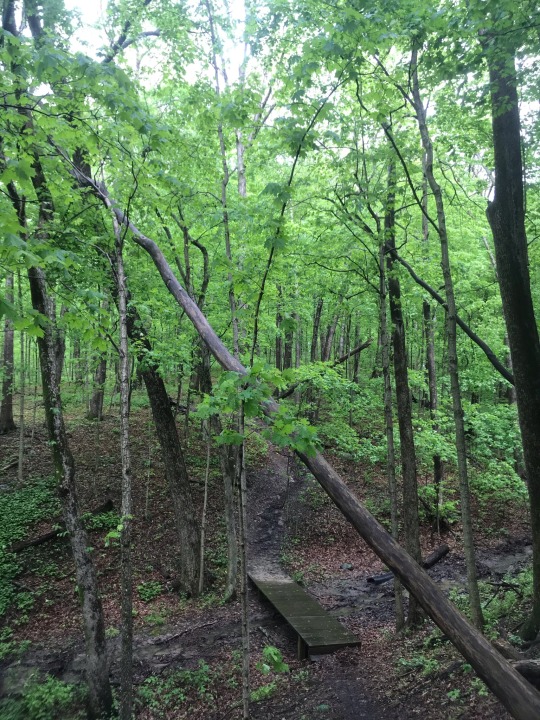#clintonia
Photo



Clintonia umbellulata Limited to Appalachian mountains, Allegheny Plateau, and the Ilp in mixed mesophytic forests

pretty sure when these bloom I feel like forest spirits are near by, get chills every time.
128 notes
·
View notes
Photo

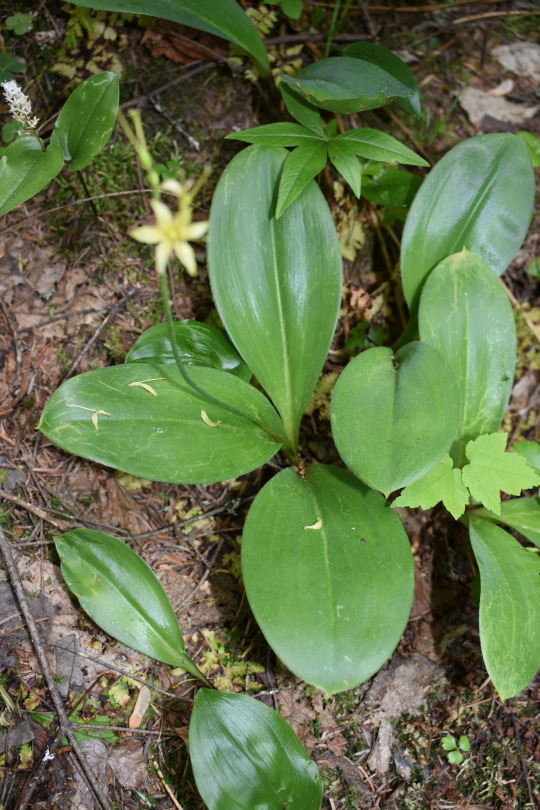
Bluebead Lily
Clintonia borealis
Liliaceae
Photographs taken on June 19, 2023, at Algonquin Provincial Park, Ontario, Canada.
#wildflowers of southern ontario#Bluebead Lily#lily#Clintonia borealis#yellow#Clintonia#Liliaceae#Algonquin Provincial Park#Algonquin#provincial park#Ontario#Canada#wildflowers#wildflower#flower#flowers#flora#nature
6 notes
·
View notes
Text
Honoring the Lady's Slippers
It’s become a tradition for us to spend Memorial Day or at least a day during this weekend searching for one of My Guy’s favorite blooms. I don’t even remember how the count began, but now he cannot not count them.
What we’ve learned over the years is that they like a variety of habitats. from dark forests to bogs, and even mountain tops. And they like to hide. So we must really don our Lady’s…

View On WordPress
#Clintonia#Common Whitetail Skimmer#Indian Cucumber-root#Lady&039;s Slipper#Maine#Memorial Day#western Maine
0 notes
Text
TS vixen Natalie Mars spanked before bareback sex
My Own Video for XVIDEOS Verification
Very small and young gay sex xxx An Extreme Wank Experience
Latino Gay Got His Ass A Big Hard Dick
black nurse cheating anal
Jean Rdz Hotwife y Esposo recienbo leche
Asian Thai Girl Sucks Cock For Cash
Emo gay wanks off while anally penetrated by skinny lover
Four sexy black bitches with round asses fuck one white stud on couch
Actors gay porn and hard young thugs Twink Boy Fingered And Fucked
#Trans-martian#dataria#traitorlike#boons#Shamokin#wraist#openhanded#compitum#sublimates#ölüm#DOP#haet#Clintonia#acronymic#unentitlement#arthur#Zahavi#ameliorativ#klaberjass#startingno
1 note
·
View note
Photo
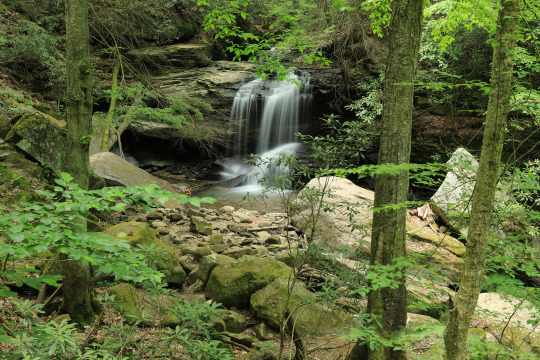

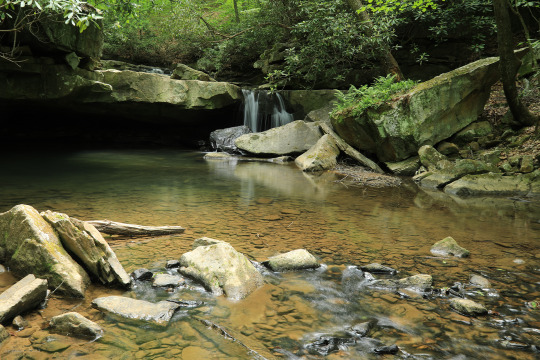





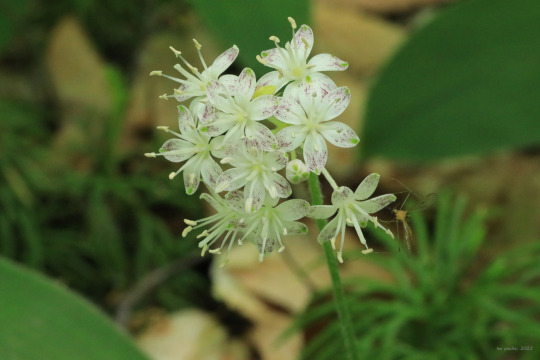

A magnet for adventure tourists and nature lovers, Ohiopyle State Park sprawls across twenty thousand square acres of steeply-sloped wild lands on the flanks of the Youghiogheny River Gorge in Pennsylvania’s Laurel Highlands. The Great Allegheny Passage bike trail runs through the heart of the park, which also anchors a thriving whitewater rafting industry. I fortunately live within a short drive of the park, so a day hike is always in the cards. Especially on a beautiful Memorial Day holiday.
From top: black raspberry (Rubus occidentalis), an aggressive colonizer with delicious fruit coveted by humans and animals alike; longstyle sweetroot (Osmorhiza longistylis), also known as anise root, because its roots have a licorice-like flavor; Indian cucumber (Medeola virginiana), easily identified by its two tiers of whorled leaves and odd, pendulous flowers; and speckled wood lily (Clintonia umbellulata), also known as white Clintonia or black-bead lily, a close relative of yellow Clintonia (Clintonia borealis), which tends to occur at higher elevations in Central Appalachia.
#appalachia#vandalia#pennsylvania#laurel highlands#allegheny mountains#youghiogheny river#ohiopyle state park#black raspberry#longstyle sweetroot#anise root#indian cucumber#indian cucumber-root#speckled wood lily#white clintonia#black-bead lily#may#spring#wildflowers#flora#jonathan run#eelah trail#jonathan run trail
318 notes
·
View notes
Text
Plant names that are used as names or might be nice as names
Abelia (Abby, Bibi, Bel, Bee, Lia)
Achillea (feminine of Achilles; Lea)
Aletris (like Alexis or Beatris; Al, Allie, Tris, Trissy)
Alisma (Al, Allie, Lee, Alis, Lissy)
Alliaria (Al, Allie, Lia, Lee, Ria)
Amaranthus (actual name already; Amy, Mara, Anne, Annie)
Ambrosia (actual name already; Amy, Rosie)
Ammophila (Amy, Phil)
Andromeda (actual name already; Anne, Annie, Andy, Mimi)
Angelica (actual name already; Angie)
Anise (Anne, Annie)
Anthea (actual name already; Anne, Annie, Thea)
Apple (actual name already)
Aquilegia (Gigi)
Aralia (Lee, Lia)
Argemone (Gem, Gemmy, Monnie)
Argentina (Gen, Genny, Tina)
Arisaema (Aris)
Aronia (Ro, Nia)
Artemisia (actual name already; Art, Arty, Mimi, Missy)
Ash/Ashley (actual name already)
Aster (like Esther)
Barley (like Bartley)
Betula (Bett, Bettie, Tula)
Bluet (Blue, Bett, Bettie)
Blossom (actual name already)
Calla (Cal, Al, Allie)
Callirhoe (Cal, Al, Allie, Ro)
Caltha (Cal, Al, Allie)
Calystegia (Cal, Al, Aly, Gia)
Carya (actual name already)
Celastrus (like Celeste; Cece, Cela)
Celosia (like Celeste; Cece, Cela)
Celtis
Chelone (Lonnie)
Cherry (actual name already)
Clarkia (Clark, Kia, Kiki)
Claytonia (Clay, Toni)
Clematis (Clem)
Cleome (Cleo, Clem, Mimi)
Clintonia (Clint, Lin, Toni)
Clover (Clo)
Comandra (like Cassandra; Anne, Annie, Andy, Maddie, Mandy)
Commelina (Mel, Lina, Melly, Lin, Lee)
Cotton
Dahlia (like Delia or Thalia)
Daisy (actual name already)
Dale (actual name already)
Dalea (like Delia or Thalia)
Daphne (actual name already)
Datura (Dottie, Tura)
Della (actual name already)
Dianthus (Dia, Dianne, Anne, Annie)
Dicentra
Drosera (Dro, Ro, Sera)
Dryas
Erigenia (Eri, Gigi, Gen, Genny, Genie, Genia, Nia)
Evadne (actual name already; Eve, Evie, Eva)
Fern (actual name already)
Filipendula (Fil, Filly, Flippa, Penn, Penny)
Flower/Fleure/Flora/etc. (actual names already)
Forest (actual name already)
Gale (actual name already)
Ginger (actual name already)
Grindelia (Dede, Delia, Lia)
Halesia (Hal, Hally, Al, Allie)
Hazel (actual name already)
Heather (actual name already)
Holly (actual name already)
Hydrangea (Hydie, Angie, Gigi)
Iris (actual name already)
Isotria (Izzy, Tria)
Juniper (actual name already; June, Junie)
Laurel (actual name already)
Lavender (actual name already; Lav, Vendy)
Leafie (actual name already)
Lemna
Liatris (like Beatris; Li, Lia, Tris, Trissy)
Lilac (like Lilah)
Lily (actual name already)
Linaria (Lin, Linny)
Lindera (Lin, Linny, Lindy)
Linnaea (Lin, Linny)
Lobelia (Lo, Lola, Bel, Lia)
Lonicera (Lon, Lonnie, Cera)
Lotus (actual name already; Lottie)
Lunaria (Lulu, Luna)
Magnolia (Maggie, Nola, Lia)
Malia (actual name already)
Maple (like Maybel; May)
Meadow (actual name already)
Melia (actual name already; Mel, Melly)
Melothria (Mel, Melly)
Mentha (actual name already)
Mertensia (like Mercedes)
Mitchella (feminine of Mitchel; Mimi, Mitch, Chella)
Monarda (Monnie, Mona)
Montia (like Monty; Monnie, Monty, Tia)
Myrtle (actual name already)
Myrica (like Erica)
Nemesia
Nyssa
Oakley (actual name already)
Olive/Olivia/etc. (actual name already)
Pansy (actual name already)
Peach (actual name already)
Peltandra (Pel, Tandy, Andy)
Persicaria (Persi, Kari, Carrie, Caria)
Petunia (actual name already)
Phyllis (actual name already)
Picea
Pilea
Pontederia (Ted, Teddie)
Poppy (actual name already)
Praline (Lina)
Primula (Prima)
Prunella (Nel, Nelly, Nella)
Robinia (Rob, Robby, Bob, Bobby, Robin, Nia)
Rose/Rosa/Rosaria/Rhode/etc. (actual names already)
Rosemary (actual name already)
Salvia (like Silvia; Sally, Vivi)
Sibara
Sida
Silvia/Sylvie/Sylvaine/etc. (actual name already; Vivi)
Tansy (actual name already)
Thuja
Tilia
Valley (Val, Al, Alley)
Vallisneria (Val, Valli, Al, Alli, Allis, Lissy, Neri)
Verbena
Veronica (actual name already)
Violet/Viola/etc. (actual name already; Vi, Vivi)
Willow (actual name already; Will, Willie)
Yarrow
Zea
41 notes
·
View notes
Text
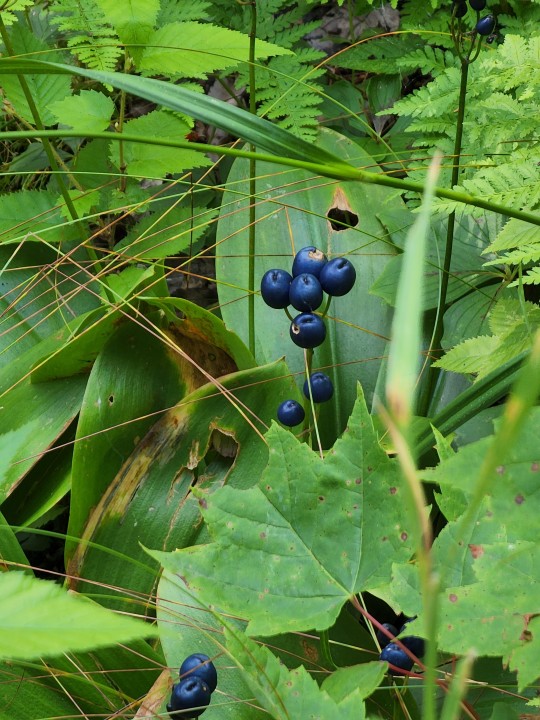
Clintonia Borealis 2022
5 notes
·
View notes
Photo

Andrews Clintonia (Clintonia andrewsiana), Butano State Park, California [6240 × 4160] [OC]
0 notes
Text
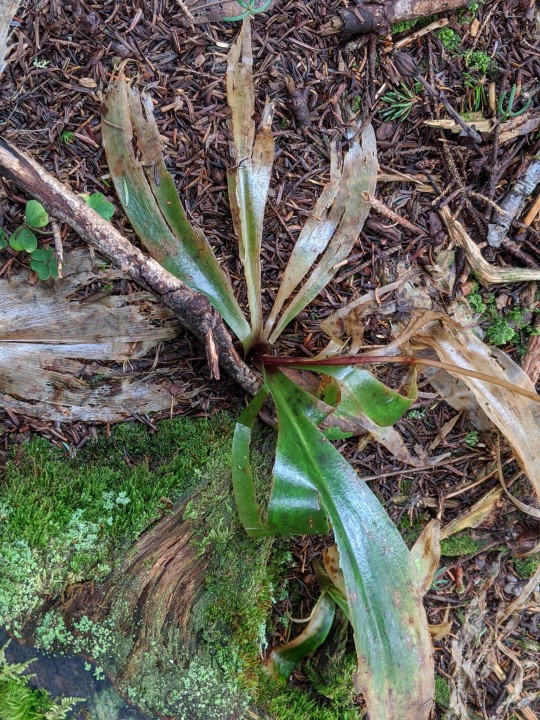



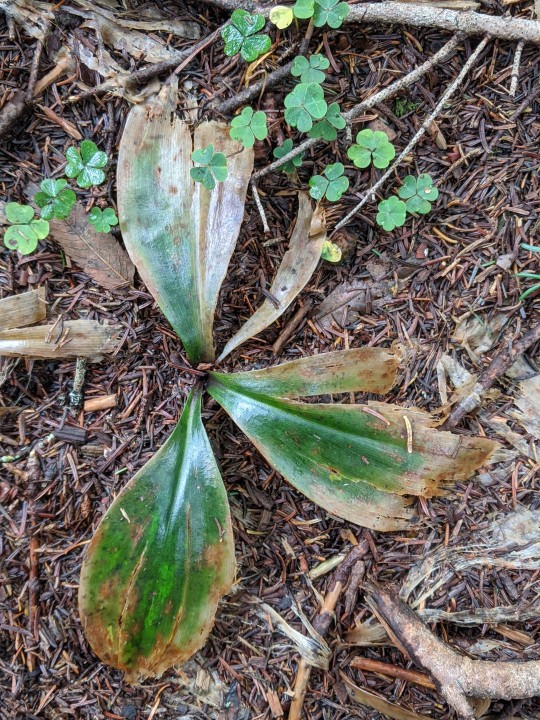
Bluebead lily - Clintonia borealis
#liliaceae#plant id#bluebead lily#blue bead lily#clintonia#clintonia borealis#mtmitch2020#wildflowers
10 notes
·
View notes
Photo

Bride's Bonnet, Clintonia uniflora (by me)
#Bride's Bonnet#Clintonia uniflora#Clintonia#Medeoloideae#Liliaceae#Liliales#flowers#plants#lily#forest#summer#Pyramid Lake Trail#North Cascades National Park#Washington#mine
19 notes
·
View notes
Photo
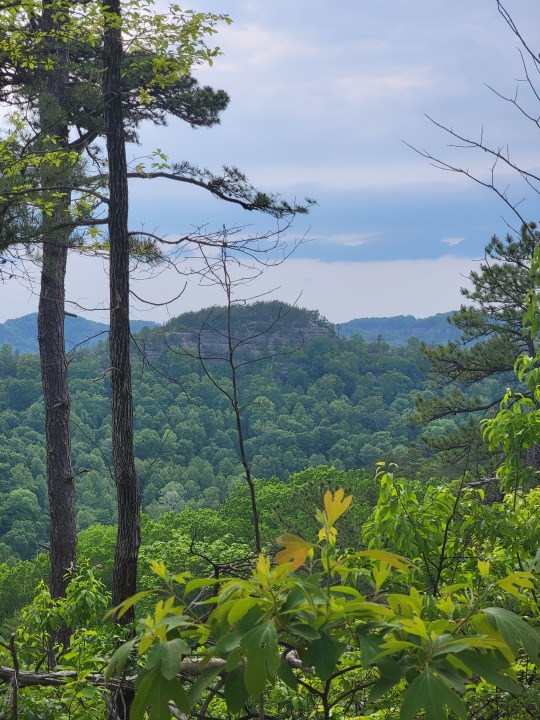
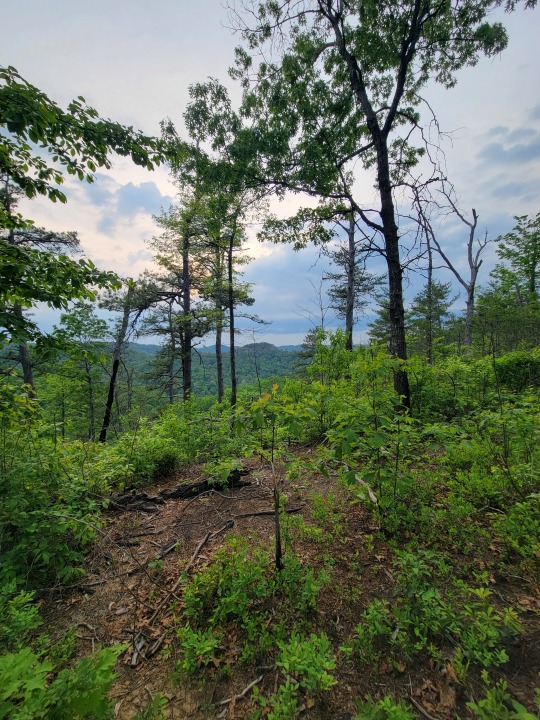


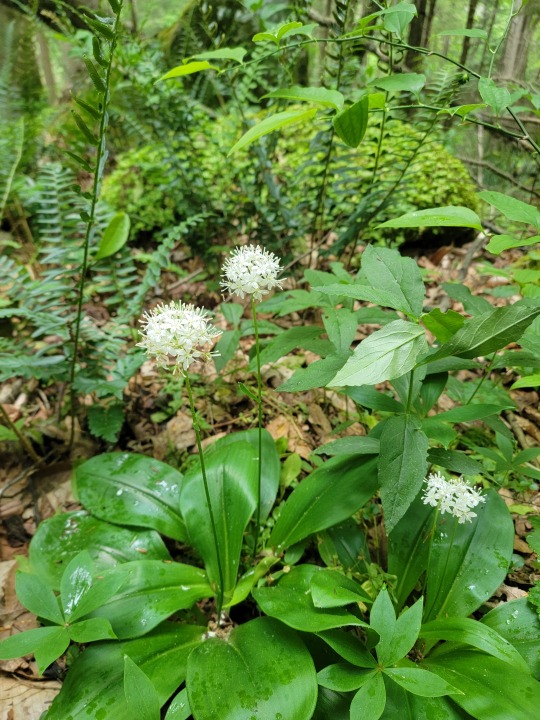

Some Clintonia,
Clintonia umbellulata ,
Species limited to Appalachian mountains and Ilp/allegheny complex
I’ve only seen this species in acidic mesic woodland. I feel like this this species has open forest growth requirements for light as well but i’ve found the species hiding out under ferns many times at Red River Gorge. Auxier ridge has many examples of small clustered populations. These leaves are relatively fleshy and remind me of an intermediate texture between midland shooting star and showy orchis. Some people say that it reminds them of the basil rosette associated with wild columbo.
#kentucky#plants#native plants#nativeplants#plant#ecology#botany#wildflowers#plantblr#ky#clintonia#clintonia umbellulata#forging#forgeing#forge#hike#hiking#nature#natureblog#botany blogs#nature on tumblr#photography#photographers on tumblr#kawaii
96 notes
·
View notes
Photo
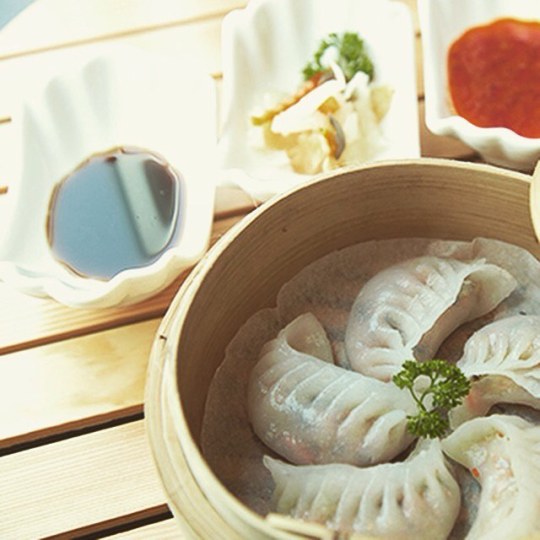
We want to teach you how to make authentic #Chinese #dumplings #ChineseCooking #ClintonIA #THECommunitysCollege #SharedExperiences https://www.instagram.com/p/BqQE4TFnPEa/?utm_source=ig_tumblr_share&igshid=ol3hbve2bnvn
1 note
·
View note
Photo
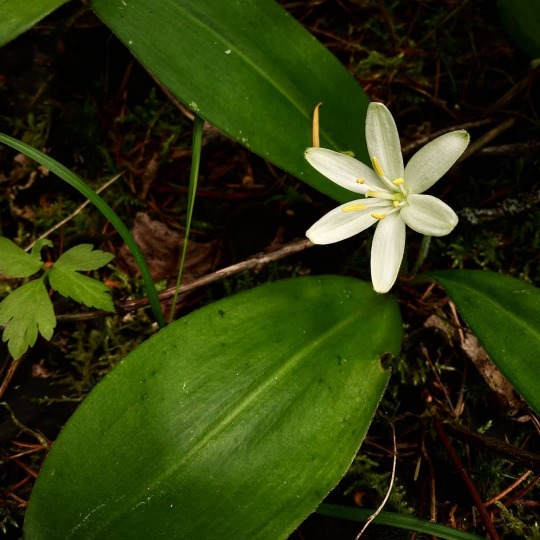
For the cuteness of #clintonia. #clintoniauniflora #queencup #beadlily https://www.instagram.com/p/CBmgHCUgCqJ/?igshid=1o6srku199w0a
0 notes
Text
Wood Lily
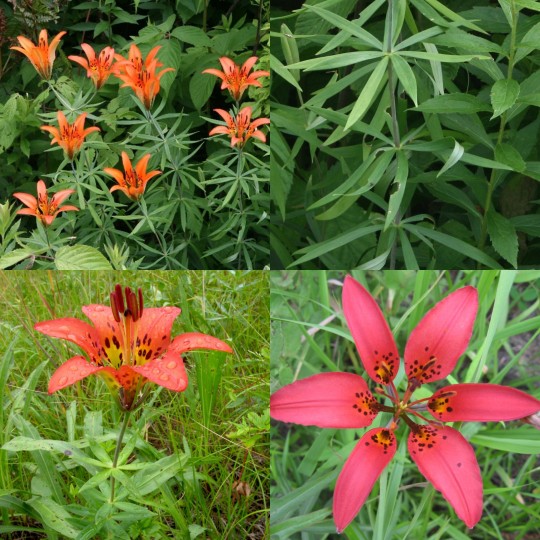
Find:lowers, seeds and bulbs are edible raw.bulbs are best when boiled in two changes of water, though still bitter/peppery.cooked bulbs can be dried whole or mashed and dried for storage.
Description:Wood lily’s stalk rises 1-3 ft. and is topped by upright, cup-shaped, purple-spotted, red-orange flowers. 1-5 funnel-shaped flowers, mostly red to orange with purplish-brown spots, on an erect stem with whorled leaves. There are usually one to four flowers per plant. The leaves of this perennial are long and narrow and arranged in whorls.
Edible parts and uses:grows in moist areas in plains, foothills, and montane regions.
Precautions: no real precautions.
Wood sorrel

Find:Wood sorrel is a common lawn weed that likes partial shade. Look for it in yards, gardens, and parks.
Description:Wood sorrel can grow up to 15 inches tall but typically only reaches eight or nine inches.Its palmately compound leaves measure 3/4 to 1 inch across (2 to 2.5 cm).Each leaf comprises three heart-shaped leaflets.Each leaflet is creased along its midvein like a folded paper heart.The leaflets fold up at night and open during the day.They're most commonly green but can also be purple or burgundy.
Edible parts and uses:Wood sorrel should be used fresh. Pick off the leaves, flowers, and immature seed pods to put in salads, avoiding older, tough stems.Eat it raw or cooked.Wood sorrel has a tart, lemon-like flavor and goes well with meat and fish.Also tea.
Precautions:can be toxic when consumed in large quantities because it inhibits the absorption of calcium.
Yellow Clintonia
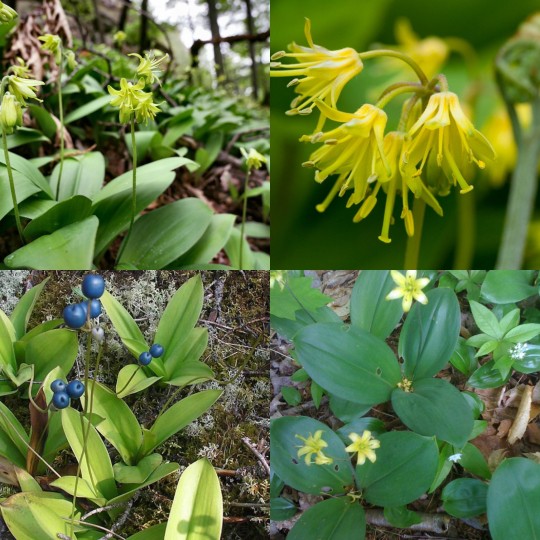
Find:grow in well-drained to imperfectly drained soils. It is usually characterized as shade tolerant, but has been seen growing in full sun in some sites.
Description:basal clump of three to five thick, shiny, oval leaves surrounds an 8-15 in. leafless stem topped by a cluster of nodding, pale yellow-green flowers. The stalk rises from a basal set of shiny, bright green, oblong leaves and has at its summit 3-6 yellowish-green, drooping, bell-like flowers. Bright blue, spherical berries follow the flowers.The cluster of beautiful fruits are noted for their extraordinary true-blue color.
Edible parts and uses:Young leaves are edible raw or cooked. This is best harvested in spring before the leaves unfurl. Older leaves can be used in soups.
Precautions:NEVER consume any other part of this plant!
Yellow marsh-marigold

Find:Wet areas in marshes, fens, ditches and wet alder woods.
Description:Marsh marigold has glossy green basal leaves that are round, oval, heart or kidney-shaped. The leaves have a deep and narrow sinus or notch. The leaves may have smooth margins or small scallops or teeth along the edges. The basal leaves have long petioles while upper, stem leaves are alternate and on shorter petioles. The plant stems are hollow.Flowers typically occur in mid-April through June, depending on location, with flowering starting later in the northern parts of the plant's range. Flowers are showy, shiny yellow, about ½ to 1½ inch across, occurring in clusters. They have 5 to 9 petal-like sepals.
Edible parts and uses:Root - must be well cooked. The raw root should not be eaten. Some caution is advised, see the notes above on toxicity. Flower buds - raw, cooked or pickled and used as a caper substitute. Eating the raw flower buds can lead to intoxication. Some caution is advised, see the notes above on toxicity. Young leaves - raw or cooked. The leaves are harvested in the spring as the plant is coming into flower and is used like spinach after cooking in two or more changes of water[. Eating the raw leaves can lead to intoxication. Some caution is advised, see the notes above on toxicity. Older leaves, before the plant flowers, can be eaten if they are well cooked. Some caution is advised, see the notes above on toxicity.
Precautions:The whole plant, but especially the older portions, contains the toxic glycoside protoanemonin - this is destroyed by heat.
Yellowcress
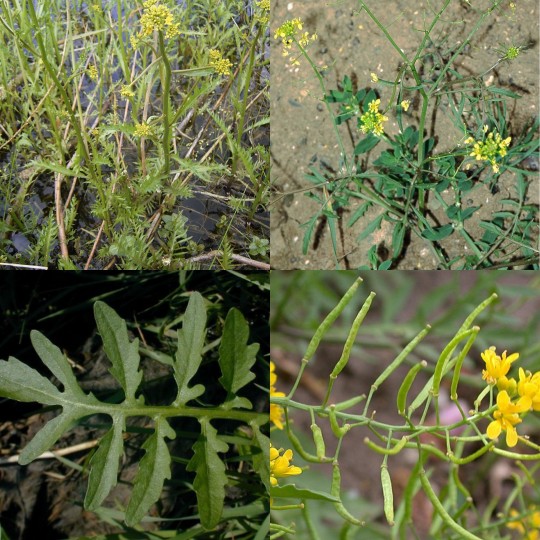
Find:include muddy borders of ponds and small rivers, marshes, openings in floodplain woodlands, prairie swales, sloughs through meadows, poorly drained fallow fields, and ditches. This plant prefers flood-prone areas that have a history of disturbance.
Description:This biennial or annual plant is 1-3' tall; it is normally erect and branches occasionally to frequently. The stems are light green to reddish green, glabrous, and strongly furrowed or ribbed. The alternate leaves are up to 7" long, 2" across, becoming smaller as they ascend the rather zigzag stems. The variable leaves are oblanceolate or oblong-ovate, hairless, pinnately lobed (usually), and dentate or crenate along the margins. Often, there are 1-2 pairs of moderately deep lobes near the base of each leaf, and shallow lobes or large teeth elsewhere. The lower leaves have stout petioles, while the upper leaves are usually sessile, or nearly so. The leaf tips are variable in shape, ranging from blunt to acute.
Edible parts and uses:The young leaves, stems and young seedlings can be eaten raw in salads or cooked. A good watercress substitute.
Precautions:no real precautions.
Farrell asparagus
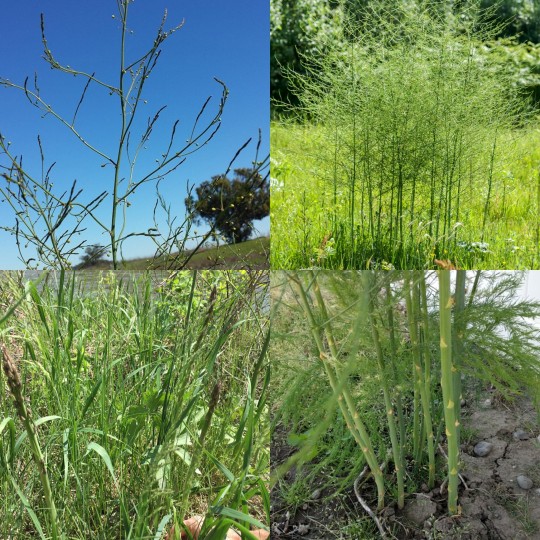
Find:found in such habitats as black soil prairies, grassy meadows, thickets, fence rows, powerline clearances in wooded areas, abandoned fields, vacant lots, gravelly areas along railroads, grassy roadsides, and waste areas.
Description:This herbaceous perennial plant is 2½–7' tall at maturity, branching occasionally. At the base of the plant, the primary stem is relatively stout (up to 1" across) and angular-terete. Small alternate leaves are appressed against this stem; they are light yellow to purple, deltate in shape, and scale-like in appearance. As the primary stem continues to lengthen, it develops alternate secondary stems that are more slender and either ascending or widely spreading. These secondary stems also have alternate leaves that are even smaller in size, scale-like in appearance, and appressed. Both the primary stem and secondary stems are grayish green, glabrous, and sometimes glaucous. Along the secondary stems and upper half of the primary stem, there are whorls of 4-15 stemlets (cladophylls) that resemble needle-like leaves; they develop from the axils of scale-like leaves. Relative to their stems, these stemlets are ascending to widely spreading; the latter are ¼–1¼" long, about 1 mm. across, grayish green to green, glabrous, and narrowly linear in shape.
Edible parts and uses: Young shoots.
Precautions:no real precautions.
Bugleweed-American

Find:part shade, sun; moist soil; along shores, wet meadows.
Description:The lower leaves are deeply lobed, up to 3½ inches long and 1½ inches wide, with a few scattered hairs along major veins on the underside, and little or no stalk. Leaves are progressively smaller as they ascend the stem and become coarsely toothed to nearly toothless at the top of the plant. The stem is square, mostly hairless, and unbranched.Fruit is a set of 4 nutlets forming a square, each nutlet containing a single seed. The calyx lobes are much longer than the fruits.A small dense cluster of 1/8-inch white flowers surrounds leaf axils along much of the stem, blooming from the bottom of the plant up and usually not all flowers in a cluster are open at the same time. Individual flowers are tubular, with 4 spreading lobes about equal in size. There are often tiny pinkish purple spots on the inside of the petals. 2 purple-tipped stamens extend out of the tube. The calyx is hairless, has 5 narrowly triangular lobes each with a sharply pointed tip and is about as long as the floral tube.
Edible parts and uses:Bugleweed shoots can be eaten raw in salads or sautéed. The leaves can be steeped in tea, eaten in salads or added to casseroles.
Precautions:no real precautions.
Bugleweed-Northern

Find:Low, wet or boggy ground in the north of its range, wet woodland in the south,light (sandy), medium (loamy) and heavy (clay) soils. Suitable pH: mildly acid, neutral and basic (mildly alkaline) soils. It can grow in semi-shade (light woodland) or no shade. It prefers moist or wet soil.
Edible parts and uses:Root - raw or cooked.The crisp white tubers can be eaten raw in salads or cooked in soups etc. When boiled for a short time they are said to make an agreeable vegetable.
Precautions:no real precautions.
Coltsfoot( Arrow-leaved)

Find:found in 0prest edges and on steep slopes prone to landslides. It tolerates wet, poorly drained areas and riverbanks susceptible to spring flooding.
Description:The flower stalks emerge in early spring, well before the leaves, and are thick, conspicuously bracted, and topped by clusters of typically Composite Family flowers, consisting of many disc flowers and surrounding ray flowers. Flowers range in shade from a slightly greyish white to faintly pink.
Edible parts and uses:The roots, leaf stalks, flowers, and flower stems of Sweet Coltsfoot are all edible. Young leaves can be eaten raw or cooked, mixed with other greens. The leaves can also be made into sauerkraut and used in the same way any other potherb is used.
Precautions:no real precautions.
Coltsfoot-Palmate

Find:Perennial herb,Prefers moist forests, openings and swamps and Low to middle elevations
Description:Form: 10-50 cm tall, many-stemmed, flowering stems appearing before leavesLeaves: Basal leaves heart-shaped and deeply divided into 5-7 toothed lobes, green and glabrous (without hair) above but white-wooly below, stem leaves reducedFlowers: Ray flowers white, disk flowers pinkish white, hairs at base of bracts, several borne in flat-topped cluster on white-wooly stalksFruit: Seeds with hairy pappus for wind dispersal
Edible parts and uses:young stems with flowers can be roasted, boiled or stir-fried. leaves can be cooked like spinach. leaves can be rolled into tight balls, dried, and burned to ash as salt substitute.
Precautions:no real precautions.
#wood Lily#wood sorrel#yellow Clintonia#marsh marigold#yellowcress#asparagus#bugleweed#coltsfoot#herbs#foraging#homemade#free food#plants#cottagecore#recipe#mb#nature#naturecore#collecting#canada#north American#landscape#homesteading#forest#diy#aesthetic#summer
15 notes
·
View notes
Text
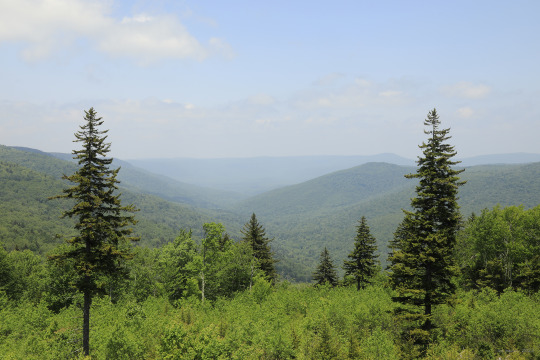



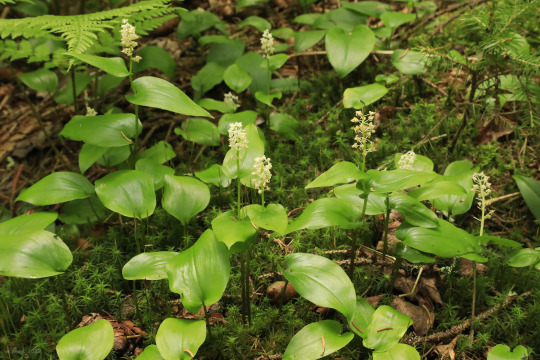

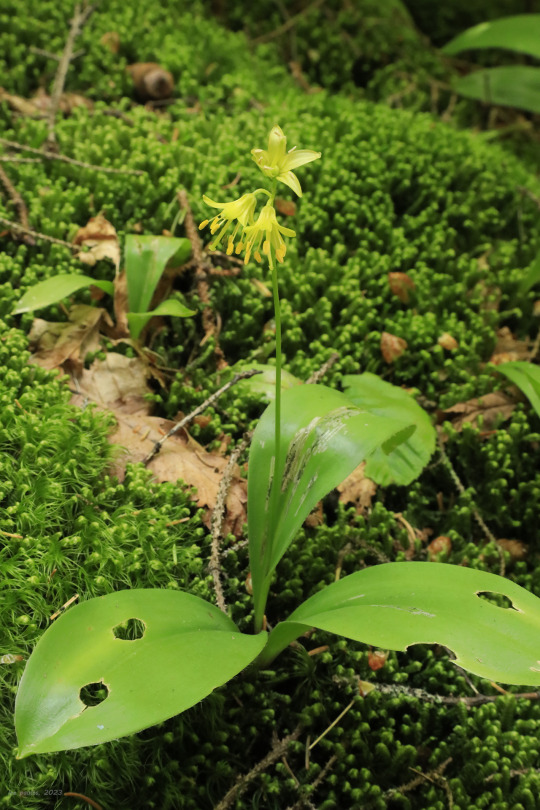
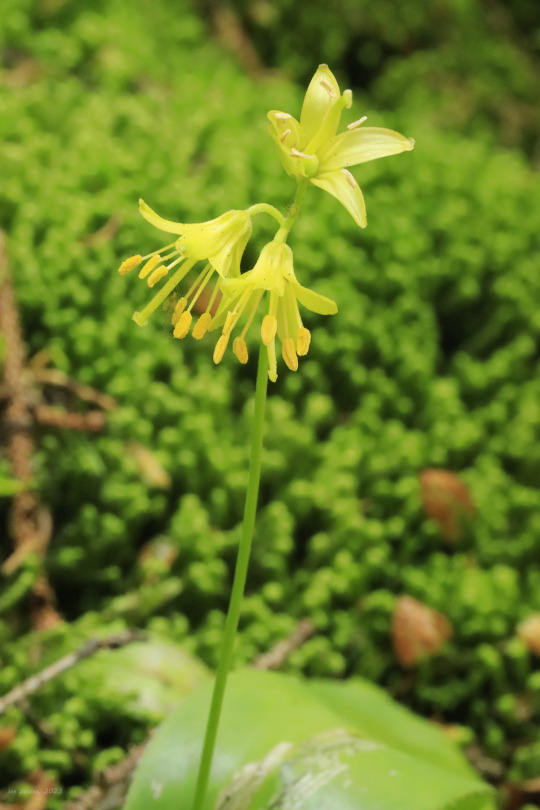





Walk with me: Visit to a high-elevation red spruce forest. The red spruce (Picea rubens) forest on top of Red Spruce Knob, the ninth highest peak in West Virginia, provides a bittersweet glimpse back in time to the primeval beauty and solitude of such places prior to the arrival of the logging companies in the mid-Nineteenth to early Twentieth centuries. The loggers stripped the mountains bare and set in motion the massive wildfires that burned away everything, including the soil itself, down to solid bedrock. Almost a century later, the forest is regenerating and in some places, such as Red Spruce Knob, has regained the richness and vitality of a healthy boreal ecosystem.
From top: a view of Red Spruce Knob, in the far distance, from the Highland Scenic Highway overlook; Canada mayflower (Maianthemum canadense), a ubiquitous understory component of the forest, along with mountain woodsorrel, yellow clintonia (a.k.a. blue-bead lily), hobblebush viburnum, Indian cucumber, green false hellebore, and various mosses and ferns; yellow clintonia (Clintonia borealis) in bloom; pink lady's slipper (Cypripedium acaule); green false hellebore (Veratrum viride) on eastern hay-scented fern (Dennstaedtia punctilobula); and mountain woodsorrel (Oxalis montana).
#appalachia#vandalia#west virginia#wildflowers#spring#flora#allegheny mountains#monongahela national forest#red spruce knob#highland scenic highway#red spruce#canada mayflower#yellow clintonia#blue-bead lily#pink lady's slipper#false green hellebore#eastern hay-scented fern#mountain woodsorrel#mountain wood-sorrel#boreal forest
208 notes
·
View notes
